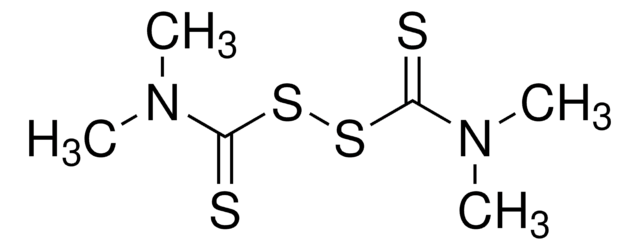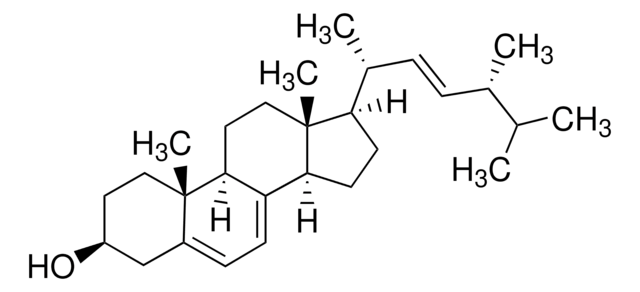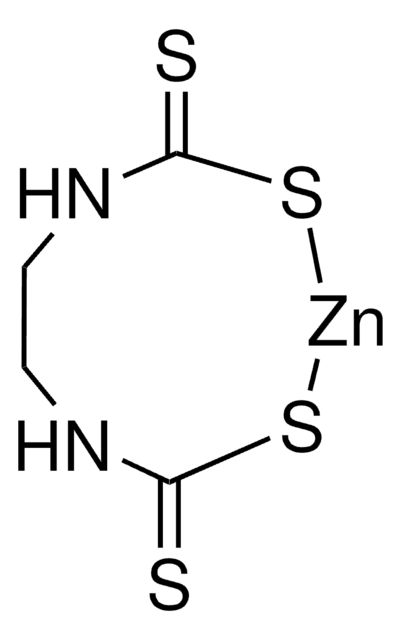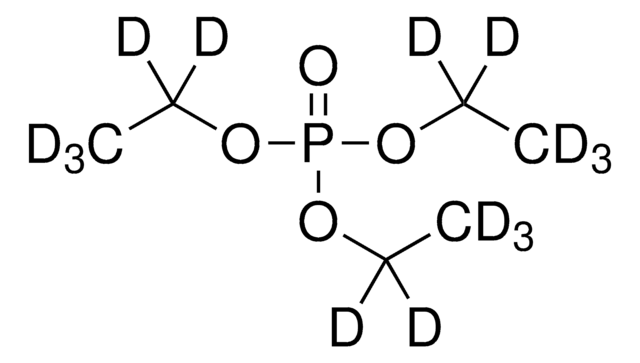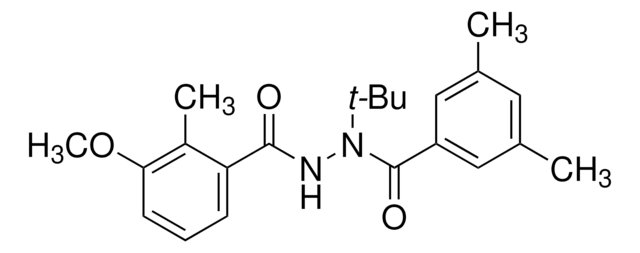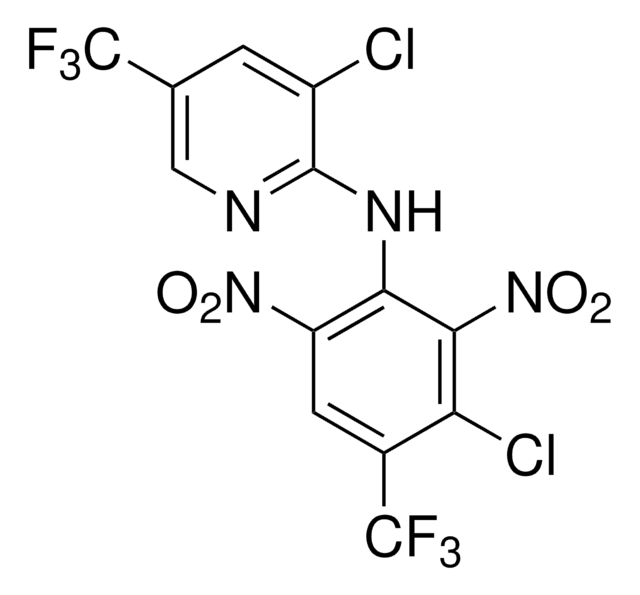Kluczowe dokumenty
45553
Mancozeb
PESTANAL®, analytical standard
Synonim(y):
Manganese Zinc ethylenebis(dithiocarbamate)
About This Item
Polecane produkty
klasa czystości
analytical standard
Poziom jakości
opis
technical mixture
linia produktu
PESTANAL®
okres trwałości
limited shelf life, expiry date on the label
metody
HPLC: suitable
gas chromatography (GC): suitable
Zastosowanie
agriculture
environmental
format
neat
temp. przechowywania
2-8°C
ciąg SMILES
S=C1NCCNC(=S)S[Mn]S1.S=C2NCCNC(=S)S[Zn]S2
InChI
1S/2C4H8N2S4.Mn.Zn/c2*7-3(8)5-1-2-6-4(9)10;;/h2*1-2H2,(H2,5,7,8)(H2,6,9,10);;/q;;2*+2/p-4
Klucz InChI
CHNQZRKUZPNOOH-UHFFFAOYSA-J
Szukasz podobnych produktów? Odwiedź Przewodnik dotyczący porównywania produktów
Zastosowanie
Informacje prawne
Nie możesz znaleźć właściwego produktu?
Wypróbuj nasz Narzędzie selektora produktów.
Hasło ostrzegawcze
Danger
Zwroty wskazujące rodzaj zagrożenia
Zwroty wskazujące środki ostrożności
Klasyfikacja zagrożeń
Aquatic Acute 1 - Aquatic Chronic 1 - Carc. 2 - Repr. 1B - Skin Sens. 1 - STOT RE 2
Organy docelowe
Nervous system,Endocrine system,Thyroid
Kod klasy składowania
6.1C - Combustible acute toxic Cat.3 / toxic compounds or compounds which causing chronic effects
Klasa zagrożenia wodnego (WGK)
WGK 1
Temperatura zapłonu (°F)
Not applicable
Temperatura zapłonu (°C)
Not applicable
Środki ochrony indywidualnej
Eyeshields, Faceshields, Gloves, type P3 (EN 143) respirator cartridges
Wybierz jedną z najnowszych wersji:
Masz już ten produkt?
Dokumenty związane z niedawno zakupionymi produktami zostały zamieszczone w Bibliotece dokumentów.
Klienci oglądali również te produkty
Nasz zespół naukowców ma doświadczenie we wszystkich obszarach badań, w tym w naukach przyrodniczych, materiałoznawstwie, syntezie chemicznej, chromatografii, analityce i wielu innych dziedzinach.
Skontaktuj się z zespołem ds. pomocy technicznej


